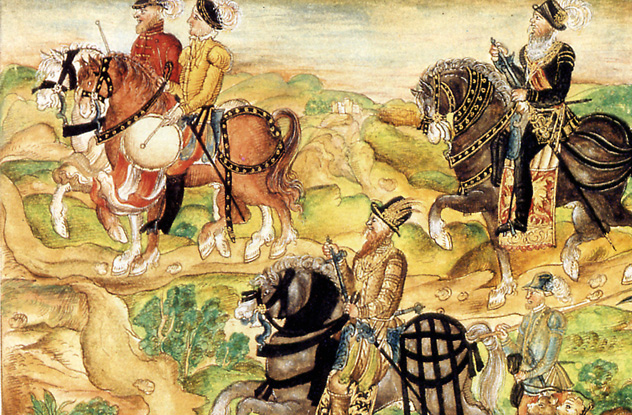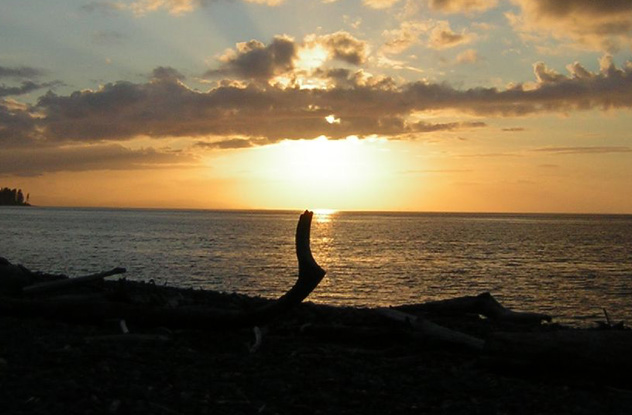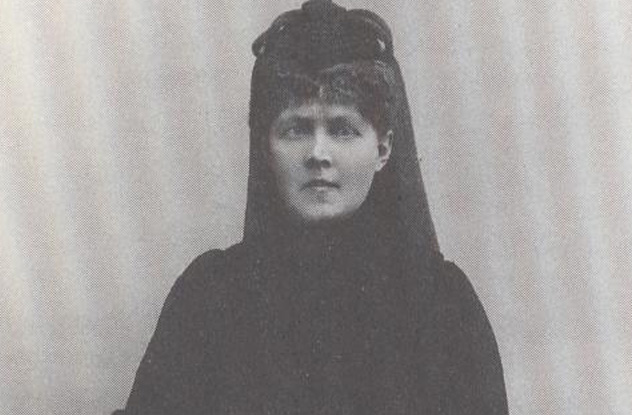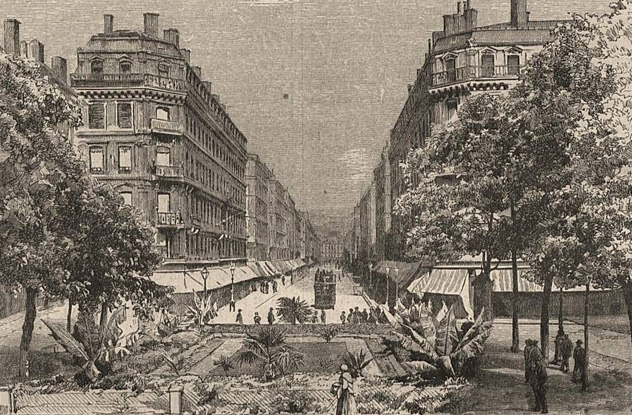 Technology
Technology  Technology
Technology  Humans
Humans 10 Everyday Human Behaviors That Are Actually Survival Instincts
 Animals
Animals 10 Animals That Humiliated and Harmed Historical Leaders
 History
History 10 Most Influential Protests in Modern History
 Creepy
Creepy 10 More Representations of Death from Myth, Legend, and Folktale
 Technology
Technology 10 Scientific Breakthroughs of 2025 That’ll Change Everything
 Our World
Our World 10 Ways Icelandic Culture Makes Other Countries Look Boring
 Misconceptions
Misconceptions 10 Common Misconceptions About the Victorian Era
 Mysteries
Mysteries 10 Strange Unexplained Mysteries of 2025
 Miscellaneous
Miscellaneous 10 of History’s Most Bell-Ringing Finishing Moves
 Technology
Technology Top 10 Everyday Tech Buzzwords That Hide a Darker Past
 Humans
Humans 10 Everyday Human Behaviors That Are Actually Survival Instincts
 Animals
Animals 10 Animals That Humiliated and Harmed Historical Leaders
Who's Behind Listverse?

Jamie Frater
Head Editor
Jamie founded Listverse due to an insatiable desire to share fascinating, obscure, and bizarre facts. He has been a guest speaker on numerous national radio and television stations and is a five time published author.
More About Us History
History 10 Most Influential Protests in Modern History
 Creepy
Creepy 10 More Representations of Death from Myth, Legend, and Folktale
 Technology
Technology 10 Scientific Breakthroughs of 2025 That’ll Change Everything
 Our World
Our World 10 Ways Icelandic Culture Makes Other Countries Look Boring
 Misconceptions
Misconceptions 10 Common Misconceptions About the Victorian Era
 Mysteries
Mysteries 10 Strange Unexplained Mysteries of 2025
 Miscellaneous
Miscellaneous 10 of History’s Most Bell-Ringing Finishing Moves
10 Colonies That Were Doomed From The Start
In the age of colonialism, European explorers set off across the ocean in search of riches and glory (generally attained them by slaughtering natives). But colonization is difficult, expensive, and time-consuming. Some settlements, for reasons of geography, leadership, or ill-preparedness, were doomed from day one.
10Cosme And New Australia
Australian Socialists In Paraguay

After the failure of widespread strikes triggered by meager wages and poor conditions, many Australian bush workers gave up on their dreams for an egalitarian, workers’ Australia. They seized on a scheme proposed by English journalist William Lane to found a socialist “New Australia” in Paraguay (which was open to settlers because up to 70 percent of its population had died in the War of the Triple Alliance). The first 220 arrived in the Paraguayan capital of Asuncion on September 22, 1893. They slogged through the mosquito-infested wilderness for six weeks.
Things quickly fell apart. The autocratic Lane was a fervent teetotaler who banned alcohol as well as fraternizing with the natives. Comic artist Robin Wood, a descendant of the Australian settlers, summed up Lane’s character: “For a socialist, he was very racist, and very stupid.” Lane’s rules were quickly flouted in the face of local sugarcane rum and alluring Guarani women (who were very available due to the dearth of adult male Paraguayans).
When Lane tried to expel a man caught in possession of rum, the colony split in two, with Lane leading a small detachment of loyalists to found Cosme. The standard of living here was arguably worse than conditions at home.
In 1899, Lane abandoned his settlement. He had come a long way from proclaiming, as the original ship left Sydney Harbor, “The world will be changed if we succeed, and we will succeed!”
The colonies were eventually dissolved by the Paraguayan government. Individual settlers were granted tracts of land, with some 2000 of their descendants still living in the country today.
9Two Forts Named Jacob
Couronians In Tobago And Gambia

You likely haven’t heard of Courland, nor should you have. It was an inconsequential vassal duchy of the Polish-Lithuanian Commonwealth with a population of only 200,000, situated in present-day Latvia. Despite its humble stature, Courland experienced a brief golden age in the 17th century under Duke Jacob Kettler, building up a large merchant navy and even attaining two overseas colonies. These were not to last.
In the Caribbean in 1654, the Couronians founded Fort Jacob on Tobago (which they gleefully renamed New Courland). This is all the more impressive considering that Tobago had been contested by bona fide colonial heavyweights. A Dutch settlement had been massacred by the Spanish in 1637, and three attempted English settlements had failed in the 1640s. Couronian persistence is also to be admired. The 1654 endeavor was their third in Tobago, the previous settlers having been slaughtered by locals.
Nevertheless, the Baltic interlopers couldn’t hope to compete with better resourced rivals, and the establishment of the Dutch colony of Nieuw Flushing across the bay quickly outpaced the Couronians. The year 1655 then marked the beginning of the “Swedish deluge,” in which the Commonwealth (and its Couronian vassal) were devastated by Swedish invasion. The Couronian capital was occupied for two years. Fort Jacob was captured, and its merchant navy and manufacturing industries were devastated, making it impossible to reinforce the colony.
Seizing their chance, in 1659, the Dutch swooped in and forced the surrender of Fort Jacob. The following 30 years saw control of the island alternate between the Dutch, the pirates, the English, and the French. Amid this turmoil, the Couronians made the occasional attempt to reclaim the place, and their claims were sometimes recognized, but these ultimately came to nothing.
Another Fort Jacob (they were fond of the Duke, apparently) was established at the mouth of the Gambia River on St. Andrew’s Island, today known as Kunta Kinteh Island, in 1651. It was also seized by the Dutch in 1659. Here, there may have been an element of subterfuge—the Dutch supposedly offered to garrison the island while Courland dealt with its European problems, but they then expelled the Couronians. Shortly thereafter, the English seized control and made the place a center of the slave trade.
8Fort Saint Louis
French In Texas

Rene-Robert Cavalier, Sieur de La Salle (noble names are pretentious) and the 300 colonists who sailed with him from France aimed to found a settlement at the mouth of the Mississippi River. Due to shoddy maps, they managed to miss their destination by a whopping 650 kilometers (400 mi), landing in Matagorda Bay. In the process, they lost two ships—one to Spanish pirates, the other to shipwreck—and consequently lost most of their supplies. The colonists themselves were also unimpressive, consisting of vagrant youths, 100 so-called soldiers recruited from the dregs of port towns, and craftsmen who had lied about their skillset. One-third of them wisely elected to return home after seeing the Texan coast.
La Salle, in the midst of paranoia and mood swings that led some to call him manic-depressive, insisted on searching for the Mississippi, losing his one remaining ship in the process. By January 1687, the colony had dwindled to 40 people. La Salle elected to take half of them on an epic overland trek to seek help from a fort he had previously set up in (what is now) northern Illinois. This expedition fell apart in mutiny, La Salle died, several joined the Indians, and five eventually stumbled into friendly territory.
The 20 or so who were left behind, mainly the ill and the women and children, held on until Christmas 1688, when they were slaughtered by Karankawa Indians. In the course of this attack, the first recorded European child to be born in Texas had its brains bashed out against a tree. Some of the elder children were adopted by the Karankawa and were eventually rescued by the Spanish.
7Klein-Venedig
Germans In Colombia

In 1528, Emperor Charles V gave the German Welser banking clan the right to settle and conquer a vast swath of territory across today’s Venezuela and Colombia. The acquisition would help settle debts the emperor had accrued, ensuring his election as Holy Roman Emperor.
From inception, the company was unstable. It existed in an uncertain legal area as subordinates of existing Spanish colonial authority, resulting from Charles’s separate roles as emperor and king of Spain. This led the Welsers to seek a quick profit over long-term prospects. Their governors launched violent raids into the interior in search of the fabled El Dorado.
The first governor, Ambrosius Ehinger, seized and branded tribesmen, founded the short-lived settlement of New Nuremberg, and died from a poison arrow wound. His successor, George Hohemuth, arrived in style with a slave raid before also setting out in search of gold. Both of these expeditions devolved into starvation and (possibly) cannibalism.
Subordinate Nikolaus Federmann, meanwhile, abandoned his post to race a Spanish expedition across the Andes into Colombia. The Spanish won, and despite playing a role in the founding of Bogota, Federmann got nothing for his efforts.
The Welsers had now thoroughly failed to set up anything sustainable. They’d also alienated the locals, who had largely fled and were therefor not much use for trading. Then two of their conquistadors (including Bartholomeus VI Welser, son of the financier of the enterprise) were murdered by a Spanish colleague. The Welsers’ rights were suspended in 1546. Nine years later, after extensive litigation, the whole area was returned to the Spanish.
6Darien
Scots In Panama

In the 1690s, the Scots decided to get in on colonization by founding the Company of Scotland Trading to Africa and the Indies, birthing a scheme to colonize the Darien Isthmus in Panama. The English (who shared a king with Scotland) unequivocally opposed the venture. They forced English investors to withdraw funds and threatened to embargo any who did business with the new company.
After the company was founded in November 1698, things quickly went downhill. The land was unsuitable for agriculture, the natives didn’t want to trade (the colonies were offering combs and mirrors, apparently in an attempt to introduce vanity to the Americas), and everyone started dying of disease. Ships went out to search for supplies, only to find out that King William had forbidden English colonies and traders from assisting the Scots. The starving Scotsmen were turned away.
When they learned the Spanish were planning an attack, the remaining 300 of the original 1,200 colonists abandoned the colony. Shortly afterward, a second fleet arrived, found the place abandoned, and launched a (surprisingly successful) pre-emptive strike on the Spaniards, before being besieged and captured.
All-in-all, the scheme cost Scotland between a quarter and half of its wealth, and the resulting impoverishment was largely responsible for Scotland’s acquiescence to the Act of Union in 1707.
5Charlesfort
French In South Carolina

In 1561, France existed in an uneasy truce between Catholic and Huguenot (Protestant) factions. In this environment, Admiral Gaspard de Coligny, who despite his Protestantism was a trusted advisor to the staunchly Catholic royal family of Charles IX, dispatched an expedition to the New World to search for potential settlements. These could act as a haven for Huguenots while keeping them under the aegis of France, or at least in commonwealth with it.
The expedition’s leader, Jean Ribault, built Charlesfort in the magnificent natural harbor of Port Royal. He sailed back to France to report his findings, vowing to return to the 27-man garrison in six months. This was not to be. France’s unsteady truce collapsed into open civil war, so he docked in England instead, only to be imprisoned as a spy.
Supplies at Charlesfort quickly ran out, exacerbated by the failure to plant crops. Morale consequently suffered, while attempts to obtain food by force soured relations with the natives. Eventually, the soldiers mutinied, killing their commander and building a crude ship to sail the Atlantic. The crew cannibalized one of their own, but the remainder were rescued by an English fishing ship.
One of the settlers (who had apparently stayed friendly with the Indians his comrades had tried to rob) stayed behind and was captured by the Spanish when they occupied the site. Ribault’s belated return in 1565 culminated in him and his new settlers being massacred by the Spanish.
4Carlota
Confederates In Mexico

Defeat in the American Civil War led many Confederates to seek a new life elsewhere. For reasons of geography, Mexico was an easy choice. It attracted 11 generals, three governors, and two former governors.
However, Mexico was hardly a stable destination. It was experiencing its own civil war, and only the Royalists (in the form of the Austrian Emperor Maximilian and his French backers) welcomed the settlers. By contrast, most ordinary Mexicans were still deeply resentful as a result of the Mexican-American War. Some Confederates viewed the Mexicans less than favorably.
Maximilian’s enthusiasm also waned when the newly reunited US started applying diplomatic pressure and supporting his republican opponents. As a result, he forbade the Confederates from organizing military units (which are somewhat necessary in the middle of a war zone) and tried to disperse them. This was in addition to many having been forced to surrender their weapons to acquire safe passage through rebel-held lands.
The largest Confederate settlement was Carlota (named for Max’s wife), near Veracruz. It was hampered by hostility from dispossessed locals and the exploitative practices of some Confederate leaders—the chief Confederate agent, Commodore Matthew Maury, and his friends bought huge swaths of land to sell at inflated prices. When the French withdrew in 1866, Max and the Confederates were doomed. The former was executed, and the latter fled, either slinking back into the US or moving on to Brazil.
3Sointula
Finnish Socialists In Canada

In 1900, a group of Finnish coal workers in Nanaimo, Canada grew tired of poor conditions and decided to set up a community of their own. They invited socialist philosopher-journalist Matti Kurikka from Finland to lead them, negotiated to take possession of 28,000-acre Malcolm Island, and named the place Sointula, meaning “place of harmony.” This name wasn’t meant to be ironic, and at first, things went fine. Kurikka’s ideology of communal ownership, decision-making by consensus, and equal pay for women proved attractive to many.
Unfortunately, the colony lacked economic stability. Coal miners and a diverse array of “shoemakers, doctors, theosophists, philosophers, and anarchists” struggled with the farming, fishing, and logging needed to sustain the settlement. They quickly plunged into debt.
Kurikka strove to uphold radical social ideals—marriage was slavery for women, and children should be raised communally—despite failing to deal with severe economic issues. This strained relations with the colonists (between Kurikka and William Lane of New Australia, it’s almost like you shouldn’t get hard-core journalists to lead your colony). A fire in the communal hall killed 11 and further demoralized the settlers. Then Kurikka’s drastically low bid for a bridge-building project proved Sointula’s ultimate doom; economics and socialism don’t always get along.
Kurikka abandoned the colony in late 1904 and the place went into liquidation the following year, but the area retains a Finnish flavor.
2Nueva Germania
Germans In Paraguay

In 1886, Paraguay was largely devoid of people, much as in the following decade when William Lane set up New Australia. Fourteen German families came to the country and founded Nueva Germania, based on a simple dream—to establish a colony of pure Aryan ubermensch, from which the Aryan race could claim the whole South American continent.
They were led in this endeavor by Bernhardt Forster and his wife Elisabeth Forster-Nietzsche, sister to philosopher Friedrich Nietzsche. The colonists were completely unprepared for their environment and fell victim to a range of maladies, including tuberculosis, malaria, snakebites, sand fleas, and simple crop failure. A despondent Forster committed suicide (as did others) in 1889, and Elisabeth returned to Germany in 1893. There, she committed herself to bastardizing her dead brother’s works to fit her own racist ideology, which he’d completely opposed.
Those left behind were reduced to subsistence farming, and the colony remains one of Paraguay’s poorest areas. The Aryan ideology quickly floundered in the face of necessity. Today, they speak the native Guarani language. Despite the odd set of blue eyes and blond hair, they are largely indistinguishable from other Paraguayans. This is despite an influx of Nazi fugitives after World War II, which may have included Josef “the Angel of Death” Mengele.
Finally, in perhaps the greatest instance of karmic irony known to man, those few who did seek to maintain racial purity suffered birth defects as a result of inbreeding.
1Sagallo
Cossacks In Africa

In the 1880s, Imperial Russia enviously watched the scramble for Africa. This gave notorious Cossack leader Nikolai Ashinov an idea—he would seize Ethiopia and gift it to the Tsar.
Thus, on January 17, 1889, Ashinov and a motley collection of 150 Cossacks landed at Tadjoura on the Horn of Africa and occupied the old Egyptian fort of Sagallo. France had already claimed the area under their sphere of influence, and the Russian government, in the face of a potential international crisis, completely disavowed the enterprise.
Undaunted, Ashinov rechristened Sagallo “New Moscow,” built a chapel, and tried to repair the fort, though his Cossacks were more interested in raiding the area. On February 16, two French cruisers arrived offshore, and an officer was sent to negotiate. Ashinov’s response was ludicrous in the extreme—he refused to meet the French governor, stated he had no intention of surrendering, and pulled out a machine gun. This quickly proved to be empty blustering as, after a short bombardment that wounded five, he surrendered.
Upon his return to Russia, Ashinov escaped from Siberian exile and went to Paris, where he tried to claim damages for the Sagallo enterprise.
Tyler is a misanthropic, mercilessly cynical, degenerate loafer who does very little. Vaguely throwing words at the Internet is the closest this miserable creature comes to productive work. Should you feel the need to violently abuse him you can do so via email or Facebook.








